OpenCL Video Processing Library Rapid Fire Programming Guide
User Manual: Pdf
Open the PDF directly: View PDF ![]() .
.
Page Count: 24
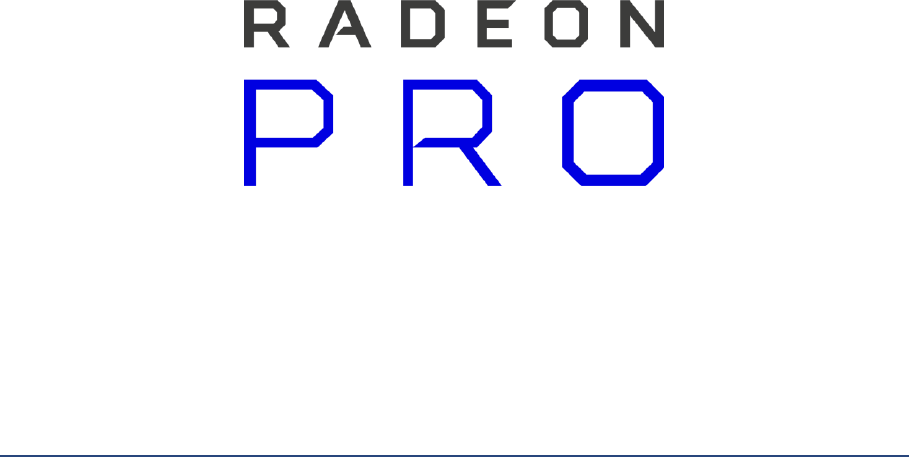
RapidFire Programming Guide

Disclaimer
The information contained herein is for informational purposes only, and is subject to change without
notice. While every precaution has been taken in the preparation of this document, it may contain technical
inaccuracies, omissions and typographical errors, and AMD is under no obligation to update or otherwise
correct this information.
Advanced Micro Devices, Inc. makes no representations or warranties with respect to the accuracy or
completeness of the contents of this document, and assumes no liability of any kind, including the implied
warranties of noninfringement, merchantability or fitness for particular purposes, with respect to the
operation or use of AMD hardware, software or other products described herein. No license, including
implied or arising by estoppel, to any intellectual property rights is granted by this document. Terms and
limitations applicable to the purchase or use of AMD’s products are as set forth in a signed agreement
between the parties or in AMD's Standard Terms and Conditions of Sale.
AMD, the AMD Arrow logo, ATI Radeon™, AMD FirePro™ and combinations thereof are trademarks of
Advanced Micro Devices, Inc. Other product names used in this publication are for identification purposes
only and may be trademarks of their respective companies.
Windows®, Visual Studio® and DirectX® are registered trademarks of Microsoft Corp.
OpenGL® is a registered trademarks of Silicon Graphics, Inc.
OpenCL™ is a registered trademark of Apple Inc. used by permission by Khronos.
3
Copyright Notice
© 2014-2016 Advanced Micro Devices, Inc. All rights reserved
Notice Regarding Standards. AMD does not provide a license or sublicense to any Intellectual Property
Rights relating to any standards, including but not limited to any audio and/or video codec technologies
such as MPEG-2, MPEG-4; AVC/H.264; HEVC/H.265; AAC decode/FFMPEG; AAC encode/FFMPEG; VC-1; and
MP3 (collectively, the “Media Technologies”). For clarity, you will pay any royalties due for such third party
technologies, which may include the Media Technologies that are owed as a result of AMD providing the
Software to you.
MIT license
Copyright (c) 2017 Advanced Micro Devices, Inc. All rights reserved.
Permission is hereby granted, free of charge, to any person obtaining a copy of this software and associated
documentation files (the "Software"), to deal in the Software without restriction, including without
limitation the rights to use, copy, modify, merge, publish, distribute, sublicense, and/or sell copies of the
Software, and to permit persons to whom the Software is furnished to do so, subject to the following
conditions:
The above copyright notice and this permission notice shall be included in all copies or substantial portions
of the Software.
THE SOFTWARE IS PROVIDED "AS IS", WITHOUT WARRANTY OF ANY KIND, EXPRESS OR IMPLIED,
INCLUDING BUT NOT LIMITED TO THE WARRANTIES OF MERCHANTABILITY, FITNESS FOR A PARTICULAR
PURPOSE AND NONINFRINGEMENT. IN NO EVENT SHALL THE AUTHORS OR COPYRIGHT HOLDERS BE LIABLE
FOR ANY CLAIM, DAMAGES OR OTHER LIABILITY, WHETHER IN AN ACTION OF CONTRACT, TORT OR
OTHERWISE, ARISING FROM, OUT OF OR IN CONNECTION WITH THE SOFTWARE OR THE USE OR OTHER
DEALINGS IN THE SOFTWARE.
Contents
PREFACE .......................................................................................................................................................... 5
ABOUT THIS DOCUMENT .......................................................................................................................................... 5
AUDIENCE .............................................................................................................................................................. 5
RAPIDFIRE SDK OVERVIEW .............................................................................................................................. 6
THE RAPIDFIRE API........................................................................................................................................... 7
RFCREATEENCODESESSION........................................................................................................................................ 7
RFDELETEENCODESESSION ........................................................................................................................................ 9
RFCREATEENCODER ................................................................................................................................................. 9
RFCREATEENCODER2 ............................................................................................................................................. 10
RFREGISTERRENDERTARGET .................................................................................................................................... 15
RFREMOVERENDERTARGET ..................................................................................................................................... 16
RFGETRENDERTARGETSTATE ................................................................................................................................... 16
RFRESIZESESSION .................................................................................................................................................. 17
RFENCODEFRAME ................................................................................................................................................. 18
RFGETENCODEDFRAME .......................................................................................................................................... 18
RFGETSOURCEFRAME ............................................................................................................................................ 19
RFSETENCODEPARAMETER ...................................................................................................................................... 20
RFGETENCODEPARAMETER ..................................................................................................................................... 20
RFGETMOUSEDATA ............................................................................................................................................... 21
RFRELEASEEVENT .................................................................................................................................................. 23

5
Preface
About This Document
This document is a programming guide for the RapidFire SDK. The major goal of this document is to
provide an introduction to the implementation of virtual desktop and cloud gaming applications using
the RapidFire SDK.
The RapidFire SDK provides an interface for virtual desktop and cloud gaming applications to reduce
the encoding latency by utilizing AMD Radeon Pro or FirePro GPUs. OpenGL 4.2, DirectX 9 and DirectX
11 textures as well as desktop capturing can be used as input to generate H.264, H.265 or
uncompressed stream output. While the encoding is handled entirely by RapidFire, the developer
keeps full control over the configuration of the stream with the ability to adjust key encoding
parameters such as resolution, frame rate and bit rate control throughout the streaming process.
Audience
This document is intended for programmers. Prior knowledge in writing code for CPUs and a basic
understanding of video encoding, video decoding, OpenGL, DirectX 9 and DirectX 11 is assumed, while
a basic understanding of GPU architectures and computer graphics is useful.
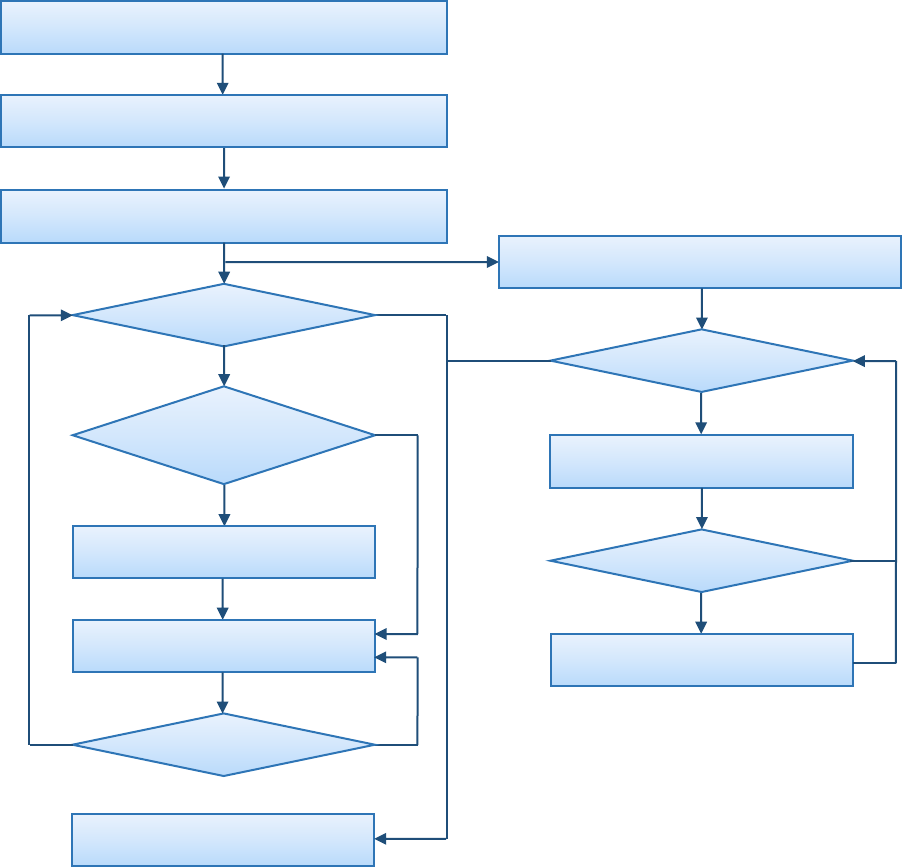
RapidFire SDK Overview
The RapidFire SDK enables ISVs to implement remote rendering solutions.
It handles the asynchronous encoding of the frame buffer as a H.264, H.265 or uncompressed stream;
it supports the following rendering APIs: OpenGL 4.2 and later, DirectX 9 and DirectX 11. The API also
provides functions that allow the capturing and encoding of an entire desktop.
API Flow Diagram:
no
yes
yes
no
no
yes
no
no
yes
yes
Create encode session
rfCreateEncodeSession()
Keep encoding
Encode settings
changed
Create encoder
rfCreateEncoder()/rfCreateEncoder2()
Register render targets
rfRegisterRenderTarget()
Update encode settings
rfSetEncodeParameter()
Encode frame
rfEncodeFrame()
Frame encoded
Delete session
rfDeleteEncodeSession()
Start streaming thread
Keep encoding
Get encoded frame
rfGetEncodedFrame()
Frame available
Write frame into output stream
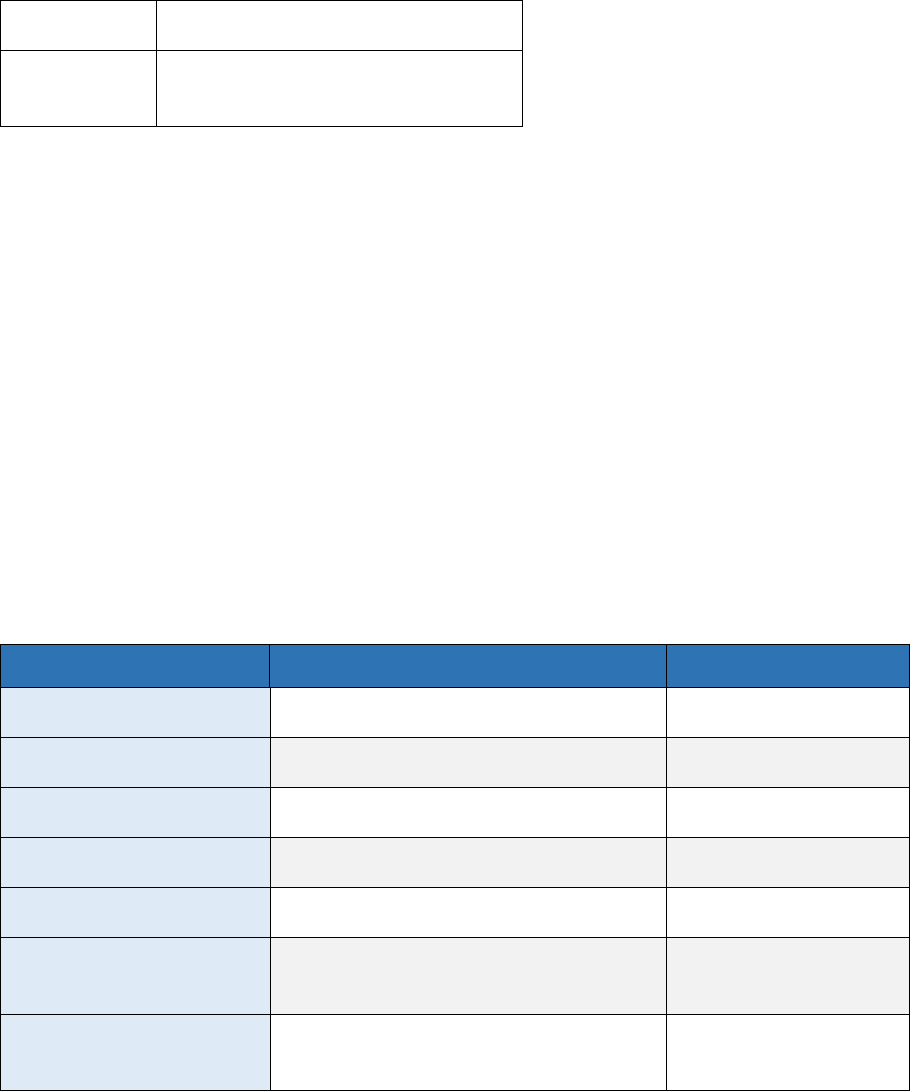
7
The RapidFire API
rfCreateEncodeSession
RFStatus rfCreateEncodeSession(RFEncodeSession* session,
RFProperties* properties)
Creates a RapidFire encode session.
Parameters:
session [out]
The created RapidFire encode session.
properties [in]
A list of session property names and
their corresponding values.
A RapidFire session encapsulates the encoder to be used, the graphics context that is used by the
calling application or the OpenCL context that is used for the color space conversion. For every session,
a log file containing further information is generated in the current directory of the application. The
location of the log file can be changed with the environment variable RF_LOG_PATH.
A session can have different sources for the encoding. It can be a render target or the whole desktop.
The following sessions can be created:
• OpenGL session.
• DirectX 9 / DirectX 9 Ex session.
• DirectX 11 session.
• Desktop capturing session.
The parameter properties specifies a list of session property names and their corresponding values.
Each property name is immediately followed by the corresponding value. The list is terminated with
0. Depending on the graphics API that is used by the application, this function takes the following
properties as input:
Property name
Description
Property type
RF_GL_GRAPHICS_CTX
OpenGL Context
HGLRC
RF_GL_DEVICE_CTX
Device Context
HDC
RF_D3D9_DEVICE
Direct3D 9 Device
IDirect3DDevice9*
RF_D3D9EX_DEVICE
Direct3D 9 Ex Device
IDirect3DDevice9Ex*
RF_D3D11_DEVICE
Direct3D 11 Device
ID3D11Device*
RF_DESKTOP
Select the desktop to capture according
to the desktop id.
unsigned int
RF_DESKTOP_DSP_ID
Select the desktop to capture according
to the windows display id.
unsigned int

RF_DESKTOP_INTERNAL_ -
DSP_ID
Select the desktop to capture according
to the display id used internally by
RapidFire.
unsigned int
RF_DESKTOP_UPDATE_ -
ON_CHANGE
If set to TRUE rfEncodeFrame will only
enqueue a captured frame if the desktop
has changed.
BOOL
RF_DESKTOP_BLOCK_ -
UNTIL_CHANGE
If set to TRUE rfEncodeFrame will block
until the desktop has changed.
BOOL
RF_FLIP_SOURCE
If set to TRUE the source image is flipped
vertically.
BOOL
RF_ASYNC_SOURCE_COPY
If set to TRUE the captured frame will be
copied into system memory
asynchronously.
BOOL
RF_ENCODER
Specifies the encoder that will be used.
RFEncoderID
RF_ENCODER_BLOCKING_ -
READ
If set to TRUE rfGetEncodedFrame will
block until AMF has finished encoding a
frame.
BOOL
RF_MOUSE_DATA
Enables capturing of the mouse cursor
shape.
BOOL
Possible RFEncoderIDs:
RF_AMF
RF_IDENTITY
RF_DIFFERENCE
AMF stands for Advanced Media Framework API encoder, that encodes an H.264 or H.265 stream.
The IDENTITY encoder returns a buffer with the uncompressed source image in the specified color
format and the DIFFERENCE encoder returns a difference map consisting of blocks with 1 being stored
in regions where the source image has changed and 0 otherwise.
rfCreateEncodeSession returns RF_STATUS_OK if the session was created successfully. Otherwise
the session is set to NULL and one of the following error codes is returned:
RF_STATUS_INVALID_SESSION_PROPERTIES if one or more of the properties is invalid.
RF_STATUS_INVALID_ENCODER if RF_ENCODER is not one of the possible RFEncoderIDs.
RF_STATUS_INVALID_D3D_DEVICE if the input Direct3D device is invalid.
RF_STATUS_INVALID_OPENGL_CONTEXT if the input OpenGL context is invalid.
RF_STATUS_INVALID_DESKTOP_ID if the input Desktop ID is invalid.
RF_STATUS_INVALID_OPENCL_ENV if the OpenCL context creation failed.
RF_STATUS_AMF_FAIL if AMF functions failed.
RF_STATUS_DOPP_FAIL if DOPP extension initialization failed.
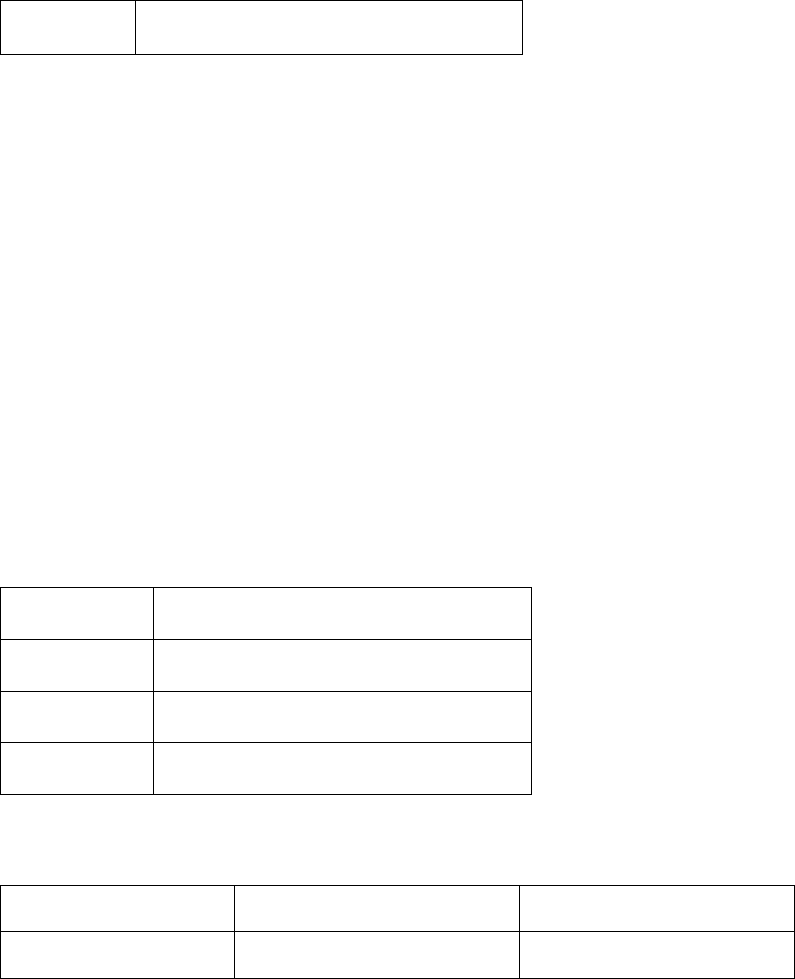
9
RF_STATUS_OPENCL_FAIL if OpenCL functions failed.
RF_STATUS_OPENGL_FAIL if the OpenGL context creation failed.
RF_STATUS_MEMORY_FAIL if a memory allocation failed.
RF_STATUS_FAIL if other errors occurred. More information is given in the log file.
rfDeleteEncodeSession
RFStatus rfDeleteEncodeSession(RFEncodeSession* session)
Deletes the encoding session and frees all associated resources.
Parameters:
session [in]
The encoding session to be deleted.
rfDeleteEncodeSession returns RF_STATUS_OK if the session was deleted successfully. Otherwise,
it returns the following error value:
RF_STATUS_INVALID_SESSION if session is not a valid session.
rfCreateEncoder
RFStatus rfCreateEncoder(RFEncodeSession session,
unsigned int uiWidth,
unsigned int uiHeight,
const RFEncodePreset preset)
Creates the encoder and resources like intermediate buffers. It initializes all properties based on the
selected encoding preset.
Parameters:
session [in]
The encoding session.
uiWidth [in]
The width of the encoded stream.
uiHeight [in]
The height of the encoded stream.
preset [in]
The encoding preset used.
Possible RFEncodePresets:
RF_PRESET_FAST
RF_PRESET_BALANCED
RF_PRESET_QUALITY
RF_PRESET_HEVC_FAST
RF_PRESET_HEVC_BALANCED
RF_PRESET_HEVC_QUALITY

The presets containing HEVC are used to set up the encoder with the H.265 video codec. For the other
parameters, the encoder is set up with the H.264 video codec.
FAST stands for fast encoding with low latency. BALANCED is balanced between quality and latency.
QUALITY stands for high video quality. The specific settings for the different presets can be found in
the properties table for rfCreateEncoder2.
Based on the preset, width and height, the encoder is configured. If desktop encoding is selected and
the dimensions for the encoding differ from the desktop size, the image is scaled to match the
encoding dimensions.
rfCreateEncoder returns RF_STATUS_OK if the encoder is created successfully. Otherwise, it returns
one of the following error values:
RF_STATUS_INVALID_SESSION if session parameter is not a valid session.
RF_STATUS_INVALID_CONFIG if no preset was specified.
RF_STATUS_INVALID_OPENCL_CONTEXT if the OpenCL context of the session is invalid.
RF_STATUS_INVALID_FORMAT if an invalid data format was specified for the encoder.
RF_STATUS_INVALID_DIMENSION if either uiWidth or uiHeight is 0 or larger than the maximum
supported size of the encoder.
RF_STATUS_INVALID_ENCODER if no encoder was specified with the creation of the session.
RF_STATUS_AMF_FAIL if the AMF initialization failed.
RF_STATUS_INVALID_ENCODER_PARAMETER if an encoder property is not supported or has an invalid
value.
RF_STATUS_OPENCL_FAIL if OpenCL resources creation failed.
RF_STATUS_FAIL if the creation of the encoder failed or the encoder is already created. More
information is given in the log file.
rfCreateEncoder2
RFStatus rfCreateEncoder2(RFEncodeSession session,
unsigned int uiWidth,
unsigned int uiHeight,
const RFProperties* properties)
Creates the encoder with the static and dynamic properties specified.
Parameters:
session [in]
The encoding session.
uiWidth [in]
The width of the encoded stream.
uiHeight [in]
The height of the encoded stream.
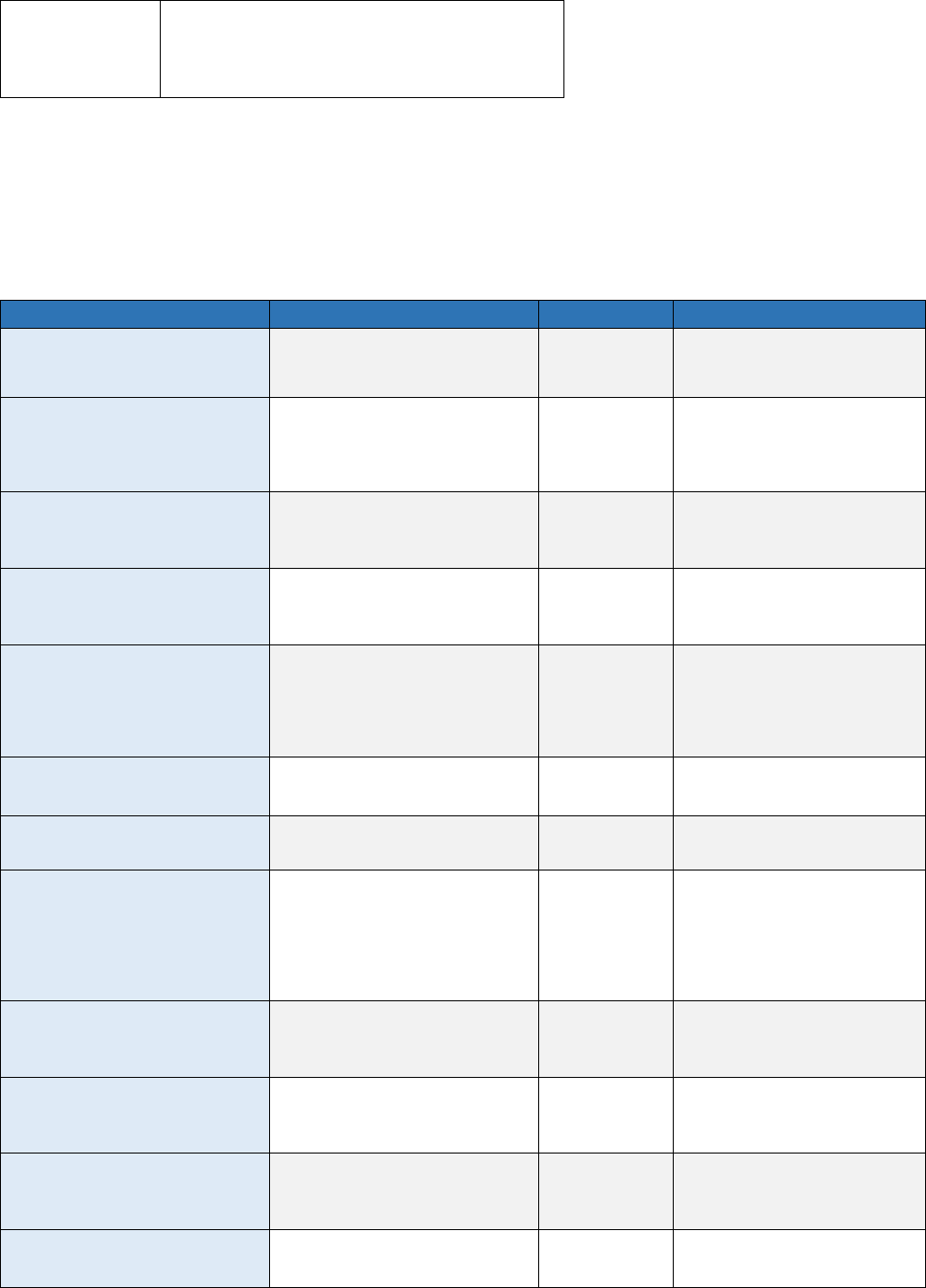
11
Properties [in]
A list of RFProperties and their
corresponding values. The list is terminated
with 0.
Properties specifies a list of encoder property names and their corresponding values. Each property
name is immediately followed by the corresponding value. The list is terminated with 0. All properties
not set by the user are set to the RF_PRESET_FAST or RF_PRESET_HEVC_FAST preset, depending on
the video codec used. Only properties matching the video codec used can be set.
rfCreateEncoder2 takes the following properties as input:
Property name
Description
Property type
Possible values and presets
RF_ENCODER_CODEC
Selects the video codec used for the
encoder.
RFVideoCodec
RF_VIDEO_CODEC_NONE
RF_VIDEO_CODEC_AVC (default)
RF_VIDEO_CODEC_HEVC
RF_ENCODER_FORMAT
Selects the input format of the encoder.
RFFormat
RF_RGBA8
RF_ARGB8
RF_BGRA8
RF_NV12
RF_ENCODER_PROFILE
[H.264] Selects the profile.
unsigned int
66 – Baseline
77 – Main (default)
100 – High
RF_ENCODER_LEVEL
[H.264] Selects the profile level.
unsigned int
10, 11, 12, 13, 20, 21, 22,
30, 31, 32, 40, 41, 42 (default), 50, 51,
52
RF_ENCODER_USAGE
[H.264] Selects the encoder usage. This
parameter configures the whole
parameter set to a preset according to
the usage.
int
-1 – Not set (default)
0 – Transcoding (quality preset)
1 – Ultra low latency (fast preset)
2 – Low latency (balanced preset)
3 – Webcam
RF_ENCODER_BITRATE
[H.264] Sets the target bitrate.
unsigned int
10 KBits/s – 100 MBits/s
20 MBit/s (default)
RF_ENCODER_PEAK_BITRATE
[H.264] Sets the peak bitrate.
unsigned int
10 KBits/s – 100 MBits/s
30 MBit/s (default)
RF_ENCODER_RATE_CONTROL_ -
METHOD
[H.264] Selects the rate control method.
unsigned int
0 – Constant QP
1 – Constant Bitrate
2 – Peak Constrained VBR
(balanced and quality preset)
3 – Latency Constrained VBR
(fast preset)
RF_ENCODER_MIN_QP
[H.264] Sets the minimum quantizer
parameter.
unsigned int
0 – 51
22 (fast and balanced preset)
18 (quality preset)
RF_ENCODER_MAX_QP
[H.264] Sets the maximum quantizer
parameter.
unsigned int
0 – 51
48 (fast and balanced preset)
46 (quality preset)
RF_ENCODER_FRAME_RATE
[H.264] Frame rate numerator.
unsigned int
1*FrameRateDen –
120*FrameRateDen
30 (default)
RF_ENCODER_FRAME_RATE_DEN
[H.264] Frame rate denominator.
unsigned int
1 – MaxInt
1 (default)
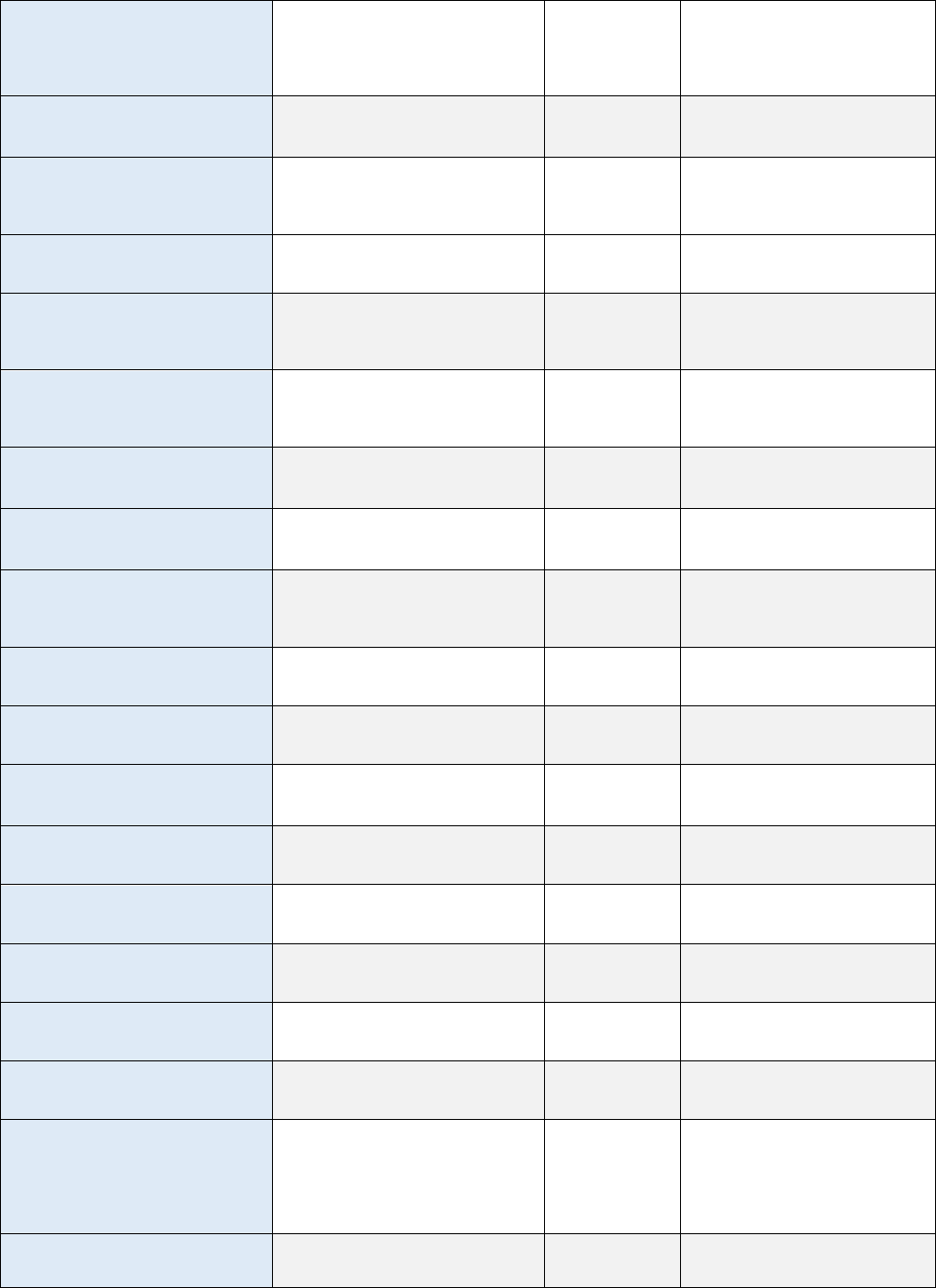
RF_ENCODER_VBV_BUFFER_SIZE
[H.264] Sets the Video Buffering Verifier
buffer size in bits.
unsigned int
1 KBit – 100 MBit
735 KBit (fast preset)
4 MBit (balanced preset)
20 MBit (quality preset)
RF_ENCODER_VBV_BUFFER_ -
FULLNESS
[H.264] Sets the initial VBV buffer initial
fullness.
unsigned int
0 – 64 (0% - 100% of VBV buffer size)
64 (default)
RF_ENCODER_ENFORCE_HRD
[H.264] Disables/enables constraints on
QP variation within a picture to meet
HRD requirement(s).
bool
true (fast preset)
false (balanced and quality preset)
RF_ENCODER_ENABLE_VBAQ
[H.264] Disables/enables Variance Based
Adaptive Quantization.
bool
false (default)
RF_ENCODER_IDR_PERIOD
[H.264] Sets IDR period. IDRPeriod = 0
turns IDR off.
unsigned int
0 – 1000
300 (fast and balanced preset)
30 (quality preset)
RF_ENCODER_INTRA_ -
REFRESH_NUM_MB
[H.264] Sets the number of intra-refresh
macroblocks per slot.
unsigned int
0 - #MBs per frame
225 (fast and balanced preset)
0 (quality preset)
RF_ENCODER_DEBLOCKING_ -
FILTER
[H.264] Turns on/off the de-blocking
filter.
bool
true (default)
RF_ENCODER_NUM_SLICES_ -
PER_FRAME
[H.264] Sets the number of slices per
frame.
unsigned int
1 - #MBs per frame
1 (default)
RF_ENCODER_QUALITY_PRESET
[H.264] Selects the quality preset.
unsigned int
0 (Balanced) (quality preset)
1 (Speed) (fast and balanced preset)
2 (Quality)
RF_ENCODER_HALF_PIXEL
[H.264] Turns on/off half-pixel motion
estimation.
unsigned int
0, 1
1 (default)
RF_ENCODER_QUARTER_PIXEL
[H.264] Turns on/off quarter-pixel
motion estimation.
unsigned int
0, 1
1 (default)
RF_ENCODER_FORCE_INTRA_ -
REFRESH
[H.264] Forces the picture type to IDR
(pre submission).
bool
false (default)
RF_ENCODER_FORCE_I_FRAME
[H.264] Forces the picture type to I-
frames (pre submission).
bool
false (default)
RF_ENCODER_FORCE_P_FRAME
[H.264] Forces the picture type to P-
frames (pre submission).
bool
false (default)
RF_ENCODER_INSERT_SPS
[H.264] Inserts Sequence Parameter Set
(pre submission).
bool
false (default)
RF_ENCODER_INSERT_PPS
[H.264] Inserts Picture Parameter Set
(pre submission).
bool
false (default)
RF_ENCODER_INSERT_AUD
[H.264] Inserts Access Unit Delimiter
(pre submission).
bool
false (default)
RF_ENCODER_HEVC_USAGE
[H.265] Selects the encoder usage. This
parameter configures the whole
parameter set to a preset according to
the usage.
int
-1 – Not set (default)
0 – Transcoding (quality preset)
1 – Ultra low latency (fast preset)
2 – Low latency (balanced preset)
3 – Webcam
RF_ENCODER_HEVC_PROFILE
[H.265] Selects the profile.
unsigned int
1 – Main (default)
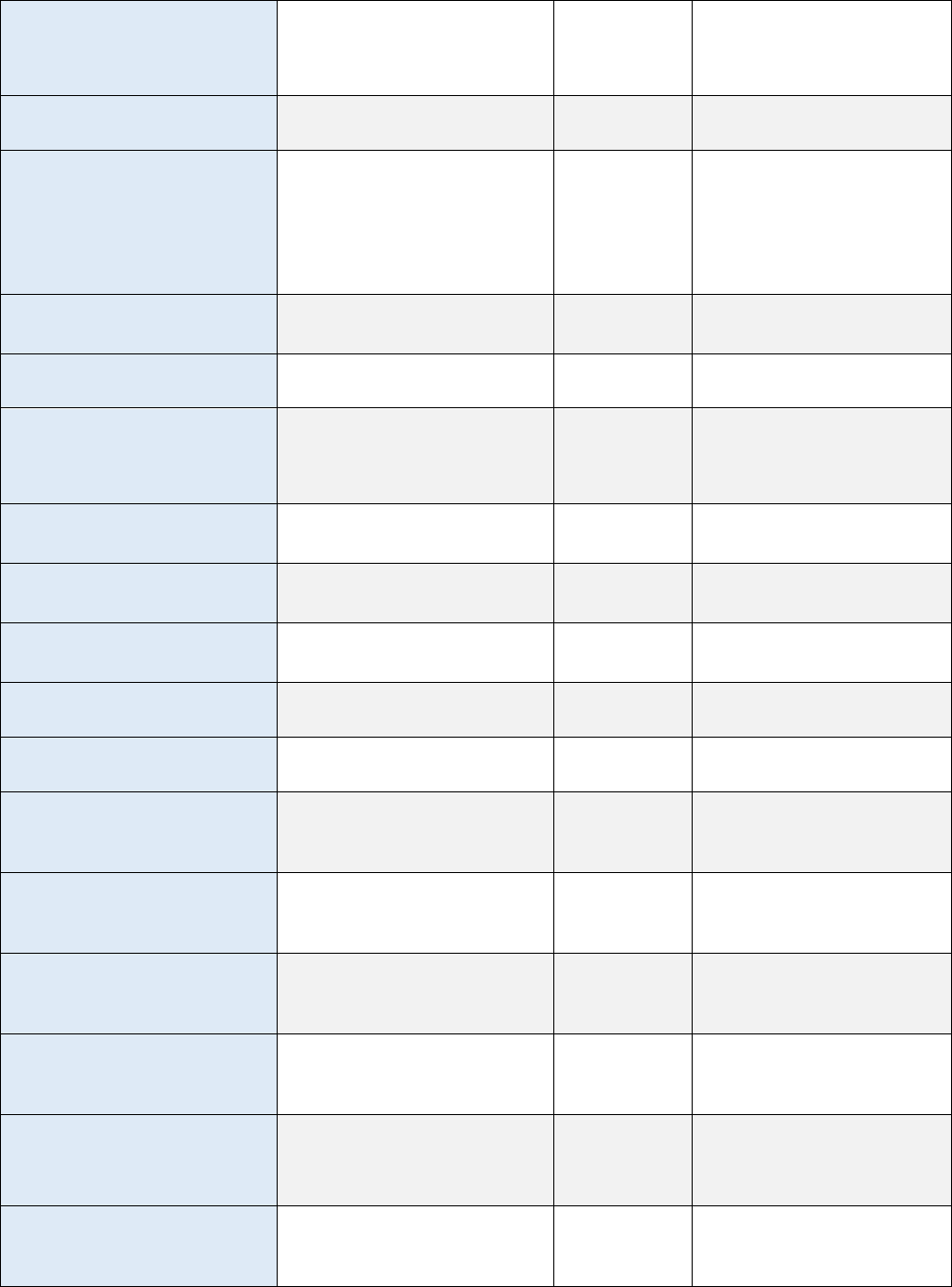
13
RF_ENCODER_HEVC_LEVEL
[H.265] Selects the profile level.
unsigned int
30 (1.0), 60 (2.0), 63 (2.1), 90 (3.0), 93
(3.1), 120 (4.0), 123 (4.1), 150 (5.0),
153 (5.1), 156 (5.2), 180 (6.0), 183
(6.1), 189 (6.2) (default)
RF_ENCODER_HEVC_TIER
[H.265] Selects the tier.
unsigned int
0 – Main (default)
1 – High
RF_ENCODER_HEVC_RATE_ -
CONTROL_METHOD
[H.265] Selects the rate control method.
unsigned int
0 – Constant
1 – Latency Constrained VBR
(fast preset)
2 – Peak Constrained VBR
(balanced and quality preset)
3 – Constant Bitrate
RF_ENCODER_HEVC_FRAMERATE
[H.265] Frame rate numerator.
unsigned int
1*FrameRateDen - 60*FrameRateDen
30 (default)
RF_ENCODER_HEVC_ -
FRAMERATE_DEN
[H.265] Frame rate denominator.
unsigned int
1 – MaxInt
1 (default)
RF_ENCODER_HEVC_VBV_ -
BUFFER_SIZE
[H.265] Sets the Video Buffering Verifier
buffer size in bits.
unsigned int
1 KBit – 100 MBit
735 KBit (fast preset)
4 MBit (balanced preset)
20 MBit (quality preset)
RF_ENCODER_HEVC_INITIAL_ -
VBV_BUFFER_FULLNESS
[H.265] Sets the initial VBV buffer initial
fullness.
unsigned int
0 – 64 (0% - 100% of VBV buffer size)
64 (default)
RF_ENCODER_HEVC_RATE_ -
CONTROL_PREANALYSIS_ENABLE
[H.265] Disables/enables pre-analysis
assisted rate control.
bool
false (default)
RF_ENCODER_HEVC_ENABLE_ -
VBAQ
[H.265] Disables/enables Variance Based
Adaptive Quantization.
bool
false (default)
RF_ENCODER_HEVC_TARGET_ -
BITRATE
[H.265] Sets the target bitrate.
unsigned int
10 KBits/s – 100 MBits/s
20 MBit/s (default)
RF_ENCODER_HEVC_PEAK_ -
BITRATE
[H.265] Sets the peak bitrate.
unsigned int
10 KBits/s – 100 MBits/s
30 MBit/s (default)
RF_ENCODER_HEVC_MIN_QP_I
[H.265] Sets the minimum QP for I
frame.
unsigned int
0 – 51
22 (fast and balanced preset)
18 (quality preset)
RF_ENCODER_HEVC_MAX_QP_I
[H.265] Sets the maximum QP for I
frame.
unsigned int
0 – 51
48 (fast and balanced preset)
46 (quality preset)
RF_ENCODER_HEVC_MIN_QP_P
[H.265] Sets the minimum QP for P
frame.
unsigned int
0 – 51
22 (fast and balanced preset)
18 (quality preset)
RF_ENCODER_HEVC_MAX_QP_P
[H.265] Sets the maximum QP for I
frame.
unsigned int
0 – 51
48 (fast and balanced preset)
46 (quality preset)
RF_ENCODER_HEVC_QP_I
[H.265] Sets the constant QP for I-
pictures.
(Only available for CQP rate
control method.)
unsigned int
0 – 51
26 (default)
RF_ENCODER_HEVC_QP_P
[H.265] Sets the constant QP for P-
pictures.
(Only available for CQP rate
control method.)
unsigned int
0 – 51
26 (default)
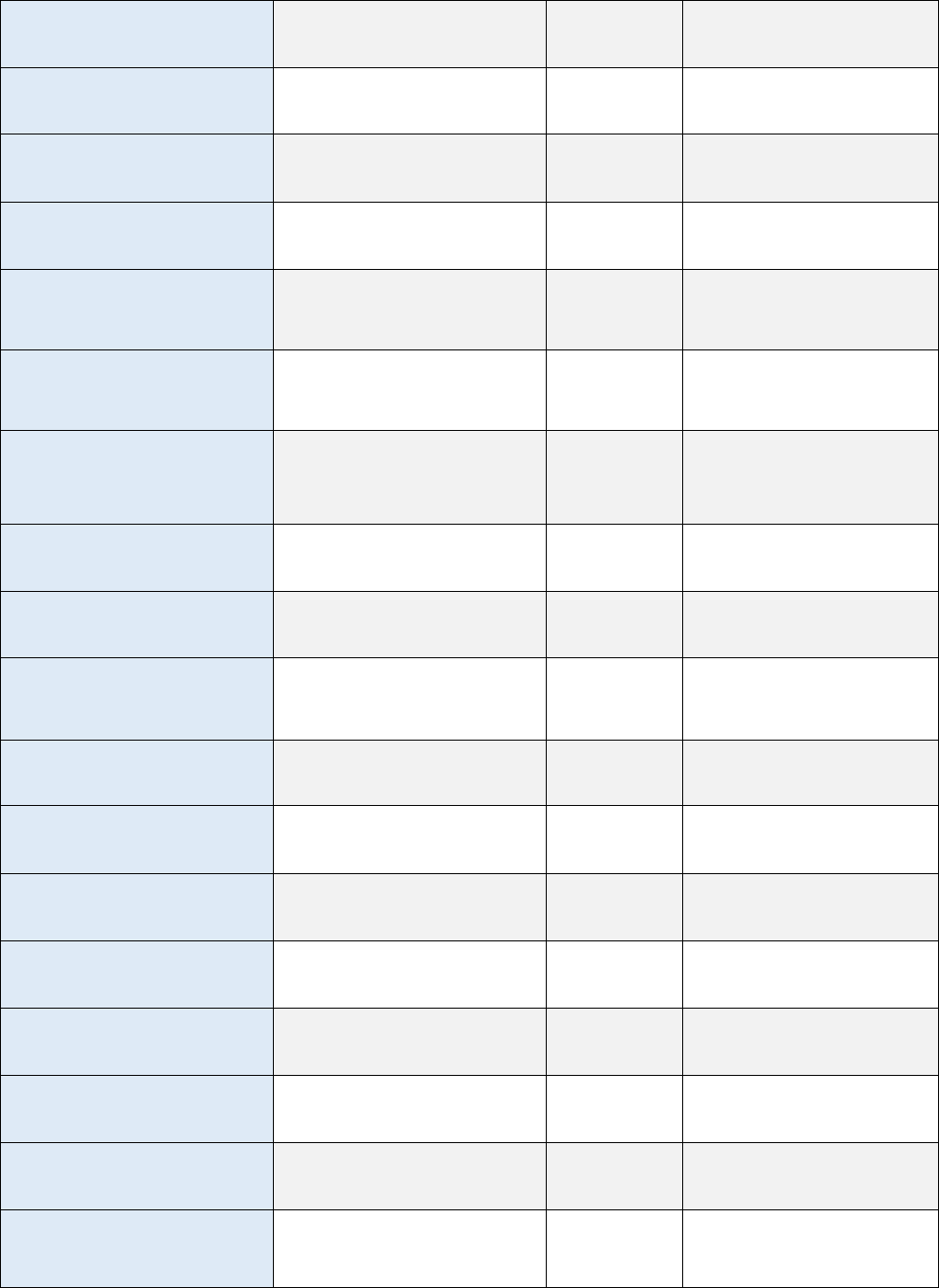
RF_ENCODER_HEVC_ -
ENFORCE_HRD
[H.265] Disables/enables constraints on
QP variation within a picture to meet
HRD requirement(s).
bool
true (fast preset)
false (balanced and quality preset)
RF_ENCODER_HEVC_MAX_AU_ -
SIZE
[H.265] Maximum AU size in bits.
unsigned int
0 – 100 Mbits
0 (default)
RF_ENCODER_HEVC_FILLER_ -
DATA_ENABLE
[H.265] Enable filler data for CBR
usage.
bool
false (default)
RF_ENCODER_HEVC_RATE_ -
CONTROL_SKIP_FRAME_ENABLE
[H.265] Enables skip frame for rate
control.
bool
true (fast and balanced preset)
false (quality preset)
RF_ENCODER_HEVC_HEADER_ -
INSERTION_MODE
[H.265] Sets the headers insertion
mode.
unsigned int
0 – None (default)
1 – GOP aligned
2 – IDR aligned
RF_ENCODER_HEVC_GOP_SIZE
[H.265] The period to insert IDR/CRA in
fixed size mode. 0 means only insert the
first IDR/CRA (infinite GOP size).
unsigned int
0 – 1000
300 (fast and balanced preset)
30 (quality preset)
RF_ENCODER_HEVC_NUM_ -
GOPS_PER_IDR
[H.265] Determines the frequency to
insert IDR as start of a GOP. 0 means no
IDR will be inserted except for the first
picture in the sequence.
unsigned int
1 – 65535
RF_ENCODER_HEVC_DE_ -
BLOCKING_FILTER_ENABLE
[H.265] Disables/enables the deblocking
filter.
bool
false (default)
RF_ENCODER_HEVC_SLICES_ -
PER_FRAME
[H.265] Sets the number of slices per
frame.
unsigned int
1 - #CTBs per frame
1 (default)
RF_ENCODER_HEVC_QUALITY_ -
PRESET
[H.265] Selects the quality preset.
unsigned int
0 – Balanced
5 – Quality (quality preset)
10 – Speed (fast and balanced preset)
RF_ENCODER_HEVC_MOTION_ -
HALF_PIXEL
[H.265] Turns on/off half-pixel motion
estimation.
bool
true (default)
RF_ENCODER_HEVC_MOTION_ -
QUARTERPIXEL
[H.265] Turns on/off quarter-pixel
motion estimation.
bool
true (default)
RF_ENCODER_HEVC_FORCE_ -
INTRA_REFRESH
[H.265] Forces the picture type to IDR
(pre submission).
bool
false (default)
RF_ENCODER_HEVC_FORCE_I_ -
FRAME
[H.265] Forces the picture type to I-
frames (pre submission).
bool
false (default)
RF_ENCODER_HEVC_FORCE_P_ -
FRAME
[H.265] Forces the picture type to P-
frames (pre submission).
bool
false (default)
RF_ENCODER_HEVC_INSERT_ -
HEADER
[H.265] Inserts SPS, PPS and VPS.
bool
false (default)
RF_ENCODER_HEVC_INSERT_ -
AUD
[H.265] Inserts Access Unit Delimiter
(pre submission).
bool
false (default)
RF_DIFF_ENCODER_BLOCK_S
Block width for difference encoder
unsigned int
BLOCK_S == multiple of 8
BLOCK_S * BLOCK_T == multiple of 64
16 (default)

15
RF_DIFF_ENCODER_BLOCK_T
Block height for difference encoder
unsigned int
BLOCK_T == multiple of 8
BLOCK_S * BLOCK_T == multiple of 64
16 (default)
RF_DIFF_ENCODER_LOCK_ -
BUFFER
Should be set to true if the
RF_DIFFERENCE encoder is used and
rfGetEncodedFrame is called in a
different thread than rfEncodeFrame.
bool
false (default)
RFFormat is the data format of the input for the encoder:
RF_ARGB8
RF_BGRA8
RF_RGBA8
RF_NV12
ARGB8, BGRA8 and RGBA8 define 32-bit RGB values with an alpha channel, each pixel is represented
by one byte each for the red, green, blue, and alpha channels. NV12 is an 8-bit Y plane followed by an
interleaved U/V plane with 2x2 subsampling.
rfCreateEncoder2 returns RF_STATUS_OK if the encoder is created successfully. Otherwise, it returns
an error value listed in function rfCreateEncoder as well as the following error code:
RF_STATUS_INVALID_PROPERTIES if one of the properties is invalid.
rfRegisterRenderTarget
RFStatus rfRegisterRenderTarget(RFEncodeSession session,
RFRenderTarget renderTarget,
unsigned int uiRTWidth,
unsigned int uiRTHeight,
unsigned int* idx)
Registers a render target that is created by the user and returns the index used for this render target
in idx. The render target must have the same dimensions as the encoder. Otherwise the call fails. Up
to 3 render targets can be registered and used for triple buffering.
Parameters:
session [in]
The encoding session.
renderTarget [in]
The handle of the render target.
uiRTWidth [in]
The width of the render target.
uiRTHeight [in]
The height of the render target.
idx [out]
The index used for this render target.
Possible RFRenderTarget formats are:
GLuint
OpenGL texture

ID3D11Texture2D*
DirectX 11 texture
IDirect3DSurface9*
DirectX 9 texture
rfRegisterRenderTarget returns RF_STATUS_OK if it registers a render target successfully.
Otherwise, it returns one of the following error values:
RF_STATUS_INVALID_SESSION if session is not a valid session.
RF_STATUS_INVALID_DIMENSION if uiRTWidth or uiRTHeight is 0 or if the render target dimension
does not match the encoder dimension.
RF_STATUS_INVALID_RENDER_TARGET if renderTarget is an invalid handle.
RF_STATUS_INVALID_OPENCL_CONTEXT if the OpenCL context of the session is invalid.
RF_STATUS_RENDER_TARGET_FAIL if the application has already registered the maximum number of
3 render targets.
RF_STATUS_OPENCL_FAIL if the creation of an OpenCL buffer for the render target failed.
RF_STATUS_FAIL if other errors occurred. More information is given in the log file.
rfRemoveRenderTarget
RFStatus rfRemoveRenderTarget(RFEncodeSession session,
unsigned int idx)
Removes a registered render target with the index idx that is no longer used in the session.
Parameters:
session [in]
The encoding session.
idx [in]
The index of the render target.
rfRemoveRenderTarget returns RF_STATUS_OK if it removes a registered render target successfully.
Otherwise, it returns one of the following error values:
RF_STATUS_INVALID_SESSION if session is not a valid session.
RF_STATUS_INVALID_INDEX if the idx exceeds the maximum number of 3 render targets.
RF_STATUS_INVALID_RENDER_TARGET if the render target is not known or not registered.
rfGetRenderTargetState
RFStatus rfGetRenderTargetState(RFEncodeSession session,
RFRenderTargetState* state,
unsigned int idx)
Gets the state of the render target with the index idx.
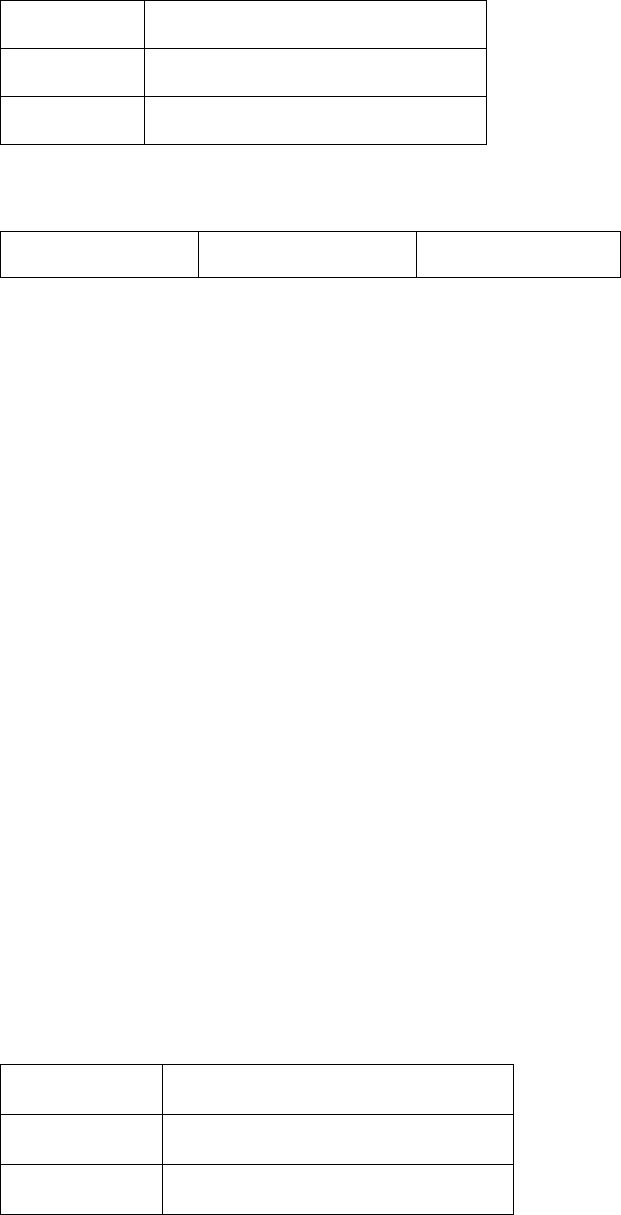
17
Parameters:
session [in]
The encoding session.
state [out]
The state of the render target.
idx [in]
The index of the render target.
RFRenderTargetState describes the state of a render target:
RF_STATE_INVALID
RF_STATE_FREE
RF_STATE_BLOCKED
INVALID: The render target is not known or not registered yet.
FREE: The render target was successfully registered and is currently not used by the API. It can be used
by the application.
BLOCKED: The render target was submitted for encoding and is currently in use by the API. It should
not be used by the application.
rfGetRenderTargetState returns RF_STATUS_OK if successful. Otherwise, it returns one of the
following error values:
RF_STATUS_INVALID_SESSION if session is not a valid session.
RF_STATUS_INVALID_OPENCL_CONTEXT if the OpenCL context of the session is invalid.
RF_STATUS_INVALID_INDEX if idx is out of range or the render target was not registered.
rfResizeSession
RFStatus rfResizeSession(RFEncodeSession session,
unsigned int uiWidth,
unsigned int uiHeight)
Resizes the session and the encoder if the encoder supports resizing. Before calling
rfResizeSession the encoding queue must be empty. Otherwise submitting additional frames to
the encoding queue might fail. Render targets that are registered by the application will be removed
and have to be registered again with the new size.
Parameters:
session [in]
The encoding session.
uiWidth [in]
The new width of the stream.
uiHeight [in]
The new height of the stream.
rfResizeSession returns RF_STATUS_OK if the resources of the session were resized successfully.
Otherwise, it returns one of the following error values:

RF_STATUS_INVALID_SESSION if session is not a valid session.
RF_STATUS_FAIL if other errors occurred. More information is given in the log file.
rfEncodeFrame
RFStatus rfEncodeFrame(RFEncodeSession session,
unsigned int idx)
Is called once the application has finished rendering into the render target with the index idx. The
render target will then be captured and encoded.
Parameters:
session [in]
The encoding session.
idx [in]
The index of the render target which will be encoded.
(ignored for encoding sessions capturing the desktop)
rfEncodeFrame returns RF_STATUS_OK if capturing and encoding are successful. Otherwise, it returns
one of the following error values:
RF_STATUS_INVALID_SESSION if session is not a valid session.
RF_STATUS_INVALID_CONTEXT if the AMF context of the encoder is invalid.
RF_STATUS_INVALID_OPENCL_CONTEXT if the OpenCL context of the session is invalid.
RF_STATUS_INVALID_ENCODER if the encoder is invalid or not created.
RF_STATUS_INVALID_FORMAT if the format of the encoder is invalid.
RF_STATUS_INVALID_INDEX if idx is out of range or the render target was not registered.
RF_STATUS_INVALID_OPENCL_MEMOBJ if the encoder couldn’t load the OpenCL result buffer for the
encoding.
RF_STATUS_DOPP_NO_UPDATE if the session parameter RF_DESKTOP_UPDATE_ON_CHANGE was set and
the desktop texture didn’t change since the last call.
RF_STATUS_QUEUE_FULL if there aren’t any more free result buffers in the queue left. Call
rfGetEncodedFrame to free the buffers.
RF_STATUS_OPENCL_FAIL if an OpenCL functions failed.
RF_STATUS_AMF_FAIL if AMF encoding failed.
rfGetEncodedFrame
RFStatus rfGetEncodedFrame(RFEncodeSession session,
unsigned int* uiSize,
void** pBitStream)
Returns the encoded frame in pBitStream and the size in bytes of the encoded frame in uiSize.

19
For the RF_DIFFERENCE encoder the returned buffer is a 2D array of byte-blocks for the captured
image, where a 1 stored in a block indicates that the image has changed. The captured image can be
obtained with the rfGetSourceFrame function.
Parameters:
session [in]
The encoding session.
uiSize [out]
The size of the bit stream.
pBitStream [out]
The bit stream of the encoded frame.
rfGetEncodedFrame returns RF_STATUS_OK if successful. Otherwise, it returns one of the following
error values:
RF_STATUS_INVALID_SESSION if session is not a valid session.
RF_STATUS_INVALID_ENCODER if the encoder is invalid.
RF_STATUS_NO_ENCODED_FRAME if there is no encoded frame in the result buffer queue.
RF_STATUS_AMF_FAIL if an AMF function failed.
rfGetSourceFrame
RFStatus rfGetSourceFrame(RFEncodeSession session,
unsigned int* uisSize,
void** pBitStream)
Returns the image that was used as the input for the encoder. If a color format conversion is required
for the encoder, the returned image contains the result of the color format conversion. The function
needs to be called prior to rfGetEncodedFrame to guarantee that the returned image is the source
image of the encoded image returned by rfGetEncodedFrame.
Parameters:
session [in]
The encoding session.
uiSize [out]
The size of the bit stream.
pBitStream [out]
The bit stream of the encoded frame.
rfGetSourceFrame returns RF_STATUS_OK if successful. Otherwise, it returns one of the following
error values:
RF_STATUS_INVALID_SESSION if session is not a valid session.
RF_STATUS_INVALID_ENCODER if the encoder is invalid.
RF_STATUS_NO_ENCODED_FRAME if there is no encoded frame in the result buffer queue.

rfSetEncodeParameter
RFStatus rfSetEncodeParameter(RFEncodeSession session,
const int property,
RFProperties value)
Sets encoding properties that do not require a re-creation of the encoder, e.g. adapting the encoding
quality to the available network bandwidth. The available properties depend on the selected encoder.
This function should be called after rfCreateEncoder/ rfCreateEncoder2, otherwise the function
does not have any effect.
Parameters:
session [in]
The encoding session.
property [in]
The encoding property to change.
value [in]
The new value of the encoding property.
For a list of valid properties and descriptions refer to the table of properties for rfCreateEncoder2.
rfSetEncodeParameter returns RF_STATUS_OK if successful. Otherwise, it returns one of the
following error values:
RF_STATUS_INVALID_SESSION if session is not a valid session.
RF_STATUS_INVALID_ENCODER if the encoder is invalid.
RF_STATUS_INVALID_CONFIG if the encoder configuration is invalid.
RF_STATUS_INVALID_ENCODER_PARAMETER if the property is invalid.
RF_STATUS_PARAM_ACCESS_DENIED if the encoder property can’t be changed by the user.
RF_STATUS_FAIL if the encoder of the session is invalid or the encoder property can’t be changed
without recreating the encoder.
rfGetEncodeParameter
RFStatus rfGetEncodeParameter(RFEncodeSession session,
const int property,
RFProperties* value)
Queries the encoder property of the parameter property. The available properties depend on the
selected encoder. This function should be called after rfCreateEncoder / rfCreateEncoder2,
otherwise the function does not have any effect.
Parameters:
session [in]
The encoding session.
property [in]
The requested encoding property.
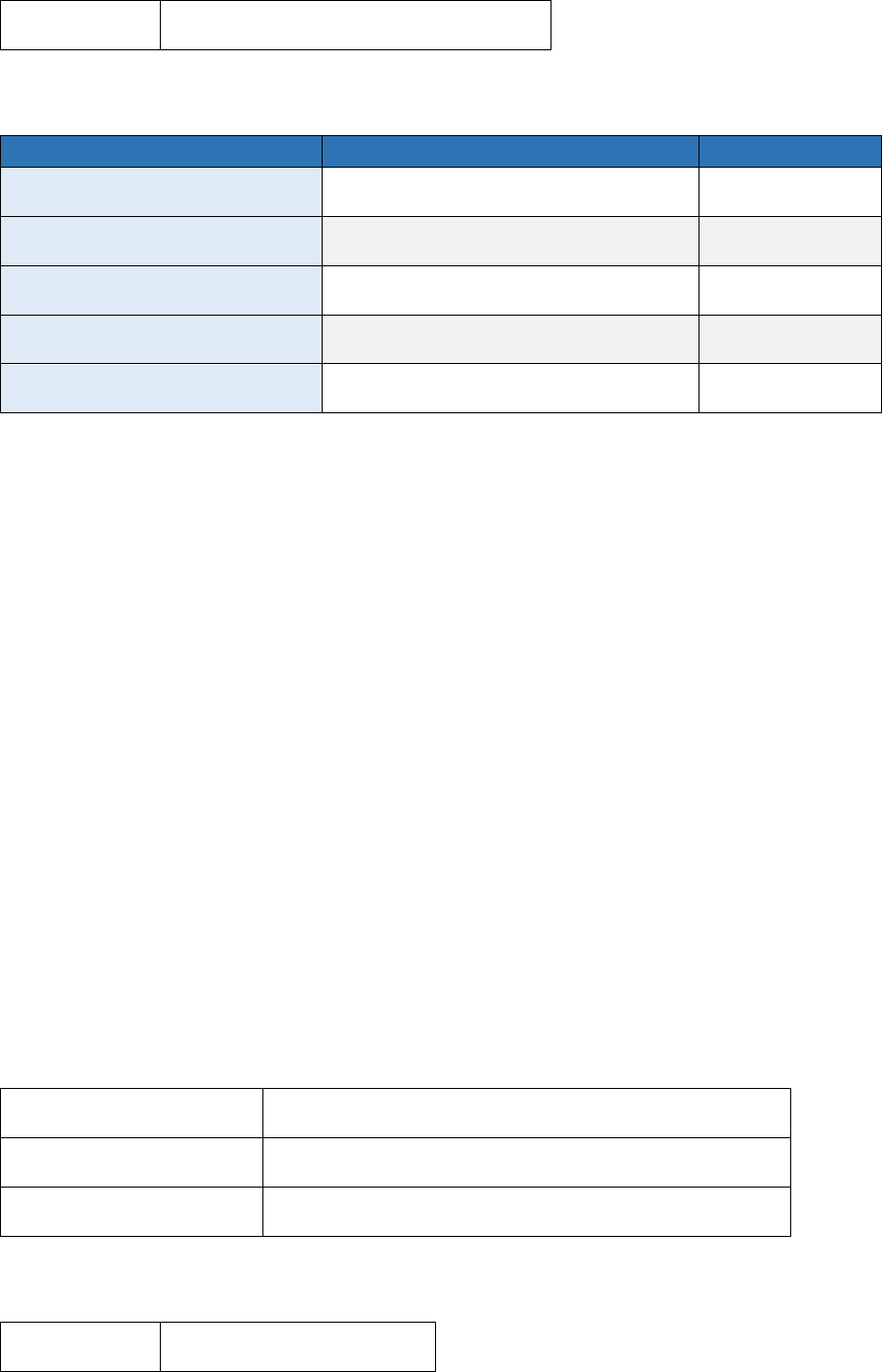
21
value [out]
The value of the encoding property.
Possible encoder properties that can be queried are:
Property name
Description
Property type
RF_ENCODER_FORMAT
The color format of the encoder output.
RFFormat
RF_ENCODER_WIDTH
The width of the render target.
unsigned int
RF_ENCODER_HEIGHT
The height of the render target.
unsigned int
RF_ENCODER_OUTPUT_WIDTH
The width of the encoder output.
unsigned int
RF_ENCODER_OUTPUT_HEIGHT
The height of the encoder output.
unsigned int
For a list of other valid properties and descriptions refer to the table of properties for
rfCreateEncoder2.
rfGetEncodeParameter returns RF_STATUS_OK if successful. Otherwise, it returns one of the
following error values:
RF_STATUS_INVALID_SESSION if session is not a valid session.
RF_STATUS_INVALID_ENCODER if the encoder is invalid.
RF_STATUS_PARAM_ACCESS_DENIED if the property is blocked by AMF.
RF_STATUS_INVALID_ENCODER_PARAMETER if the property queried is invalid.
rfGetMouseData
RFStatus rfGetMouseData(RFEncodeSession session,
int iWaitForShapeChange,
RFMouseData* mouseData)
Returns the mouse cursor shape data. To use it the session needs to be created with the
RF_MOUSE_DATA set to true.
Parameters:
session [in]
The encoding session.
iWaitForShapeChange [in]
If set to 1 the call blocks until the mouse shape changed.
mouseData [out]
The returned mouse shape data.
The RFBitmapBuffer structure stores the bitmap data:
uiWidth
The width of the bitmap.

uiHeight
The height of the bitmap.
uiPitch
The Pitch of the bitmap.
uiBitsPerPixel
Bits per pixel of the bitmap.
pPixels
The data of the bitmap.
The RFMouseData structure stores the cursor shape data:
iVisible
Is 1 if the cursor is visible and 0 otherwise.
uiXHot
The horizontal position of the cursor hot spot.
uiYHot
The vertical position of the cursor hot spot.
mask
The cursor bitmask bitmap. If the cursor is monochrome, this bitmask is formatted so
that the upper half is the cursor AND bitmask and the lower half is the XOR bitmask.
If the cursor is colored, this mask defines the AND bitmask of the cursor.
color
The cursor color bitmap containing the color data.
This member is optional. If the cursor is monochrome, color.pPixels is NULL.
For pixels with false in the mask bitmap the color is directly blended with the
destination pixel.
For pixels with true in the mask bitmap the color is XORed with the color of the
destination pixel.
rfGetMouseData returns RF_STATUS_OK if successful. Otherwise, it returns one of the following error
values:
RF_STATUS_INVALID_SESSION if session is not a valid session.
RF_STATUS_MOUSEGRAB_NO_CHANGE if the cursor shape did not change.
RF_STATUS_FAIL if the session was not created with RF_MOUSE_DATA set to true.
rfGetMouseData2
RFStatus rfGetMouseData2(RFEncodeSession session,
int iWaitForShapeChange,
RFMouseData2* mouseData)
Returns the mouse cursor shape data. To use it the session needs to be created with the
RF_MOUSE_DATA set to true.
Parameters:
session [in]
The encoding session.
iWaitForShapeChange [in]
If set to 1 the call blocks until the mouse shape changed.
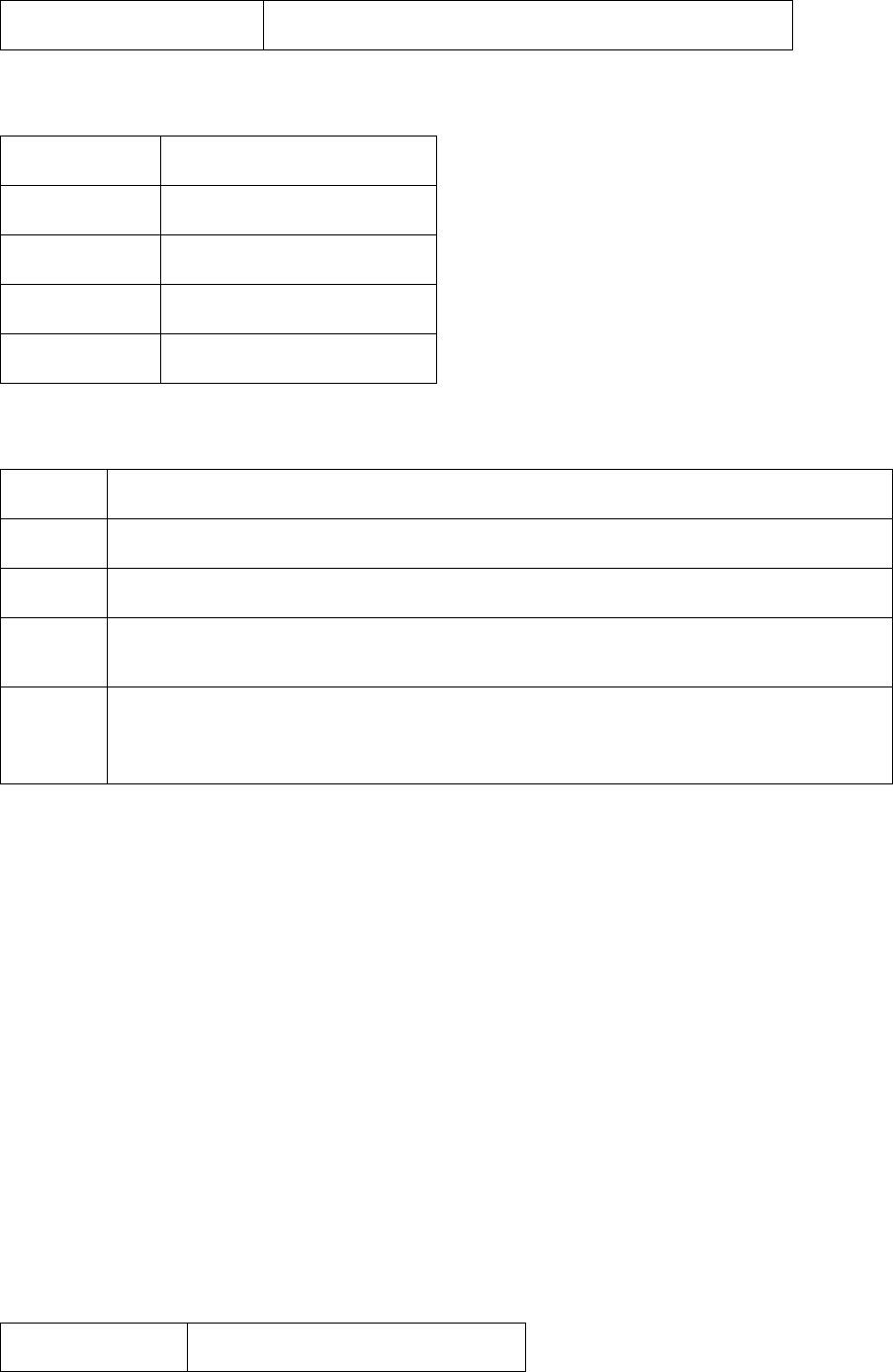
23
mouseData [out]
The returned mouse shape data.
The RFBitmapBuffer structure stores the bitmap data:
uiWidth
The width of the bitmap.
uiHeight
The height of the bitmap.
uiPitch
The Pitch of the bitmap.
uiBitsPerPixel
Bits per pixel of the bitmap.
pPixels
The data of the bitmap.
The RFMouseData2 structure stores the cursor shape data:
iVisible
Is 1 if the cursor is visible and 0 otherwise.
uiXHot
The horizontal position of the cursor hot spot.
uiYHot
The vertical position of the cursor hot spot.
uiFlags
The type of the cursor. 1 for monochrome cursors, 2 for color cursors and 4 for masked
color cursors.
pShape
A RFBitmapbuffer containing the cursor shape data. The pPixels buffer contains the
cursor shape data in a format that is compatible with the DXGKARG_SETPOINTERSHAPE
struct used in the kernel mode driver function DxgkddiSetpointershape.
rfGetMouseData2 returns RF_STATUS_OK if successful. Otherwise, it returns one of the following error
values:
RF_STATUS_INVALID_SESSION if session is not a valid session.
RF_STATUS_MOUSEGRAB_NO_CHANGE if the cursor shape did not change.
RF_STATUS_FAIL if the session was not created with RF_MOUSE_DATA set to true.
rfReleaseEvent
RFStatus rfReleaseEvent(RFEncodeSession session,
RFNotification const rfNotification)
Signals a notification event. This can be used to unblock a thread that is waiting for the event to be
signaled.
Parameters:
session [in]
The encoding session.

rfNotification [in]
Specifies which event to signal.
RapidFire uses RFNotification events to get signaled on mouse cursor shape changes and desktop
changes:
RFDesktopNotification
RFMouseShapeNotification
The RFDesktopNotification event is used to unblock a thread that called rfEncodeFrame for a
RapidFire session with the property RF_DESKTOP_BLOCK_UNTIL_CHANGE set to 1.
The RFMouseShapeNotification event is used to unblock a thread that called rfGetMouseData with
the iWaitForShapeChange parameter set to 1.
rfReleaseEvent returns RF_STATUS_OK if successful. Otherwise, it returns one of the following error
values:
RF_STATUS_INVALID_SESSION if session is not a valid session.
RF_STATUS_FAIL if RFNotification is invalid or the event was not created.